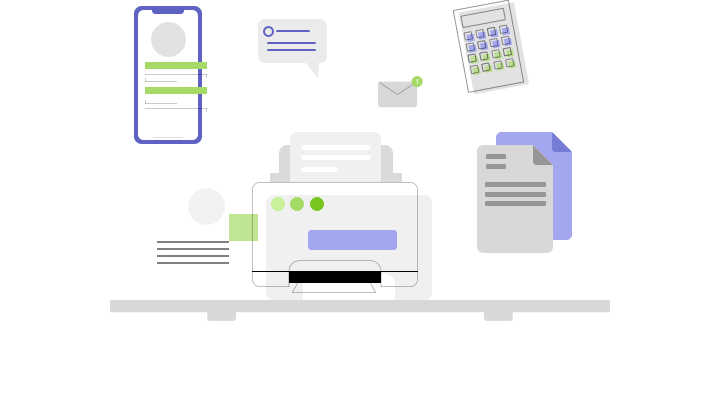


If a reduced price is established for a special order, then it’s critical that the revenue received from the special order at least covers the incremental costs. The reason why there’s a lower incremental cost per unit is due to certain costs, such as fixed costs remaining constant. If a reduced price is established for a special order, then it’s critical that the revenue received from the special order at least covers the incremental costs. In the U.S., federal income tax is incremental, also known as progressive.
What Is the Benefit of Incremental Analysis?
Incremental costs (or marginal costs) help determine the profit maximization point for an organization. If a business is earning more incremental revenue (or marginal revenue) per product than the incremental cost of manufacturing or buying that product, the business earns a profit. The simple example above explains the idea, but in practice, incremental cash flows are extremely difficult to project. Besides the potential variables within a business that could affect incremental cash flows, many external variables are difficult or impossible to project. Market conditions, regulatory policies, and legal policies may impact incremental cash flow in unpredictable and unexpected ways. Another challenge is distinguishing between cash flows from the project and cash flows from other business operations.
Understanding Incremental Cost of Capital
The IRS periodically adjusts the income thresholds for each tax bracket based on inflation. Top earners who are in the 37% tax bracket don’t pay 37% of all their income to the federal government. In 2025, a single filer would pay 37% only on income that exceeds $626,350. Instead, they would pay 10% on the first $11,925 of their income, then pay increasing percentages according to the year’s tax brackets until they reach the 37% bracket for income over $626,350. Ultimately, a thorough understanding of incremental cost empowers businesses to make well-informed decisions that can positively impact their bottom line. An incremental system is different from a flat or proportional tax system in which all taxpayers pay the same percentage in taxes.
What is Incremental Cost of Capital?



Incremental analysis is useful when a company works on its business strategies, including the decision to self-produce or outsource a process, job, or function. Incremental taxes are just one type of tax system that’s imposed on income. This example doesn’t account for any deductions, including the standard deduction, which also impact the amount of tax that a person pays when filing their tax return.
Understanding Contribution Margins
However, the $50 of allocated fixed overhead costs are a sunk cost and are already spent. The company has excess capacity and should only consider the relevant costs. Therefore, the cost to produce the special order is $200 per item ($125 + $50 + $25).



- Incremental cash flow projections are required for calculating a project’s net present value (NPV), internal rate of return (IRR), and payback period.
- Investors begin to wonder whether the company may have issued too much debt given their current cash flow and balance sheet.
- If a company responds to greater demand for its widgets by increasing production from 9,000 units to 10,000 units, it will incur additional costs to make the extra 1,000 widgets.
- A flat tax allows people to earn more and keep more of that income in their pockets.
Composite cost of capital may also be known as weighted average cost of capital. The WACC calculation is frequently used to determine the cost of capital, where it weights the cost of debt and equity according to the company’s capital structure. A high composite cost of capital indicates that a company has high borrowing costs; a low composite cost of capital signifies low borrowing costs.



The «incremental» aspect of incremental cost of capital refers to how a company’s balance sheet is effected by issuing additional equity and debt. With each new issuance of debt a company may see its borrowing costs increase as seen it the coupon it has to pay investors to buy its debt. The coupon is a reflection of a company’s creditworthiness (or risk) as well as market conditions.
- In both cases, the top percentage that a taxpayer is required to pay increases along with their income.
- Let’s say, as an example, that a company is considering increasing its production of goods but needs to understand the incremental costs involved.
- If a reduced price is established for a special order, then it’s critical that the revenue received from the special order at least covers the incremental costs.
- In this case, each additional unit costs $50 ($500 divided by 100 units), making it easier for ABC Manufacturing to evaluate the profitability of the promotional campaign.
- For example, when the 2,000 additional units are manufactured most fixed costs will not change in total although a few fixed costs could increase.
- The simple example above explains the idea, but in practice, incremental cash flows are extremely difficult to project.
- U.S. federal income tax is based on an individual’s income and filing status.
Even though Line B generates more revenue than Line A, its resulting incremental cash flow is $5,000 less than Line A’s due to its larger expenses and initial investment. If only using incremental cash flows as the determinant for choosing a project, Line A is incremental amount the better option. Alternatively, once incremental costs exceed incremental revenue for a unit, the company takes a loss for each item produced. Therefore, knowing the incremental cost of additional units of production and comparing it to the selling price of these goods assists in meeting profit goals.
How To Get A Small Business Loan For Woman
This is also different from QuickBooks a regressive tax in which all individuals must pay the same tax rate regardless of income, such as with property or school taxes. In both cases, the top percentage that a taxpayer is required to pay increases along with their income. Learn about the definition and calculation of incremental costs in finance, along with examples, to better understand their significance in financial analysis. Incremental analysis models include only relevant costs, and typically these costs are broken into variable costs and fixed costs.